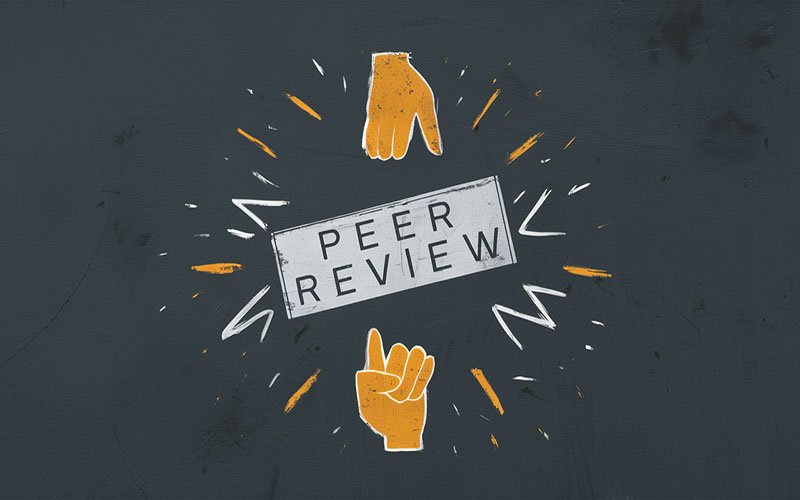Hello, interested minds! Today we are going to look at the crucial world of peer review and why that process lies at the front and center of moving us forward in academic and scientific thought.
Table Of Content
- What is Peer Review?
- The Significance of Peer Review
- The Purpose of Peer Review
- Why Peer Reviews Are Important
- Constructive Feedback
- Error Detection
- Ensuring Accuracy
- Peer Review: Its Role in Evidence-Based Practice
- Types of Peer Review
- Single-blind Peer Review
- Double-blind Peer Review
- Open Peer Review
- Post-publication Peer Review
- Models of Peer Review
- The Future of Peer Review
- Emerging Trends and Innovations
- Integration of Artificial Intelligence
- Ethical and Practical Implications
- Conclusion
You have given your best to that revolutionary study or research project. Although by now you must be pretty excited to let all and sundry know what you found, hold on! Before your paper strides onto the grand stage of the world of academia, it must undergo rigorous peer review.
Peer review often catches errors, flaws, inconsistencies, and other weaknesses in studies. Reviewers may point out:
- Biases, confounding factors, or limitations of the research design
- Problematic statistical analysis or interpretation of data
- Inaccurate facts, statements not supported by evidence, or questionable assumptions
- Insufficient information about methods, materials, or procedures
- Ethical concerns like lack of informed consent or harm to subjects
Peer review improves the quality and credibility of scientific work by identifying issues.
What is Peer Review?
Peer review is the process of subjecting research work, including articles submitted to journals or conference proceedings, grant applications, and book manuscripts, to the scrutiny of others who are experts in the same field prior to publication.
This critical review is performed by peers—people who are experts in the same subject area as the work being reviewed.
Reviewers look for aspects like soundness of the underlying concepts, originality, proper analysis of data, and appropriate referencing of previous relevant research.
Through this meticulous process, peer review acts as a quality control mechanism that maintains scholarly rigor and filters out poor quality or irrelevant research.
The Significance of Peer Review
Peer review isn’t just a bureaucratic hurdle; it’s the backbone of trust in the world of academia. Here’s why:
Definition and Purpose: Peer review is the process by which scholarly work is evaluated by experts in the same field before it’s published. Its primary purpose is to ensure the quality, validity, and integrity of research.
Establishing Credibility: Imagine you’re about to try a new restaurant. You’d probably check the reviews first, right? Similarly, in the realm of research, peer review enhances the credibility of findings by subjecting them to rigorous evaluation by peers who assess their validity, methodology, and significance.
Quality Assurance: Peer review acts as a gatekeeper, ensuring that only high-quality research makes it to publication.
The Purpose of Peer Review
Peer review isn’t just about nitpicking; it serves a greater purpose:
Promoting Transparency: Peer review is like turning on the lights in a dark room – it brings transparency and clarity to the research process. By subjecting research to scrutiny, it ensures that everything’s above board and open for all to see.
Facilitating Dialogue: Picture a lively dinner party where everyone’s sharing their thoughts and ideas. That’s peer review in action – fostering dialogue, debate, and collaboration among researchers, ultimately enriching the scientific community.
Advancing Knowledge: At its core, peer review is about moving the needle forward. By evaluating research for its novelty, significance, and contribution to the field, peer reviewers pave the way for new discoveries and breakthroughs.
Why Peer Reviews Are Important
Peer review isn’t just a formality; it’s a crucial aspect of scholarly communication. Here’s why it matters:
Constructive Feedback
Picture this: you’re rehearsing for a big performance, and your friends give you feedback to help you nail it. That’s peer review in a nutshell – offering constructive criticism to help authors fine-tune their work and bring out its best.
Error Detection
Sometimes, even the best of us make mistakes. That’s where peer review swoops in like a superhero, spotting errors, biases, and inconsistencies that authors might have missed. By catching these slip-ups, it ensures that the final product is as accurate as can be.
Ensuring Accuracy
In the world of evidence-based practice, where decisions can be life-changing, accuracy is everything. Peer review acts as the guardian angel, making sure that the evidence we rely on is rock-solid and trustworthy.
Peer Review: Its Role in Evidence-Based Practice
In the realm of evidence-based practice, peer review is the gold standard for research validation. Here’s how it contributes:
Strengthening Validity: Evidence-based practice is all about making informed decisions based on solid evidence. Peer review plays a crucial role here, ensuring that the evidence we use is legit and reliable, like a sturdy bridge supporting our decision-making process.
Enhancing Trustworthiness: Trust is the name of the game in healthcare. By subjecting research to the rigorous scrutiny of peer review, evidence-based practitioners can rest easy knowing that the evidence they rely on is as trustworthy as it gets.
Promoting Best Practices: Peer review isn’t just about judging existing research – it’s also about pushing the boundaries and setting new standards. By highlighting the best practices and innovations, peer-reviewed research guides practitioners toward delivering top-notch care.
Types of Peer Review
Single-blind Peer Review
Imagine submitting your work to a journal where the reviewers know who you are, but you don’t know who they are. That’s single-blind peer review for you.
It’s like sending your manuscript into a mysterious world where your identity is known, but the identities of those who review your work remain hidden. This setup aims to keep things fair and unbiased, ensuring that your research gets a fair shake without any preconceived notions.
Double-blind Peer Review
Now, picture a scenario where both you and the reviewers are kept in the dark about each other’s identities. That’s double-blind peer review. It’s like sending your manuscript into a black box, where the only thing that matters is the quality of your work.
This approach helps eliminate biases and ensures that your research is evaluated solely on its merits.
Open Peer Review
In contrast to the secrecy of single and double-blind peer review, open peer review is all about transparency. Here, everyone knows who’s who—authors, reviewers, and readers alike.
It’s like having a candid conversation with your peers, where feedback flows freely and everyone’s opinions are out in the open. This openness fosters accountability and trust, making the review process more collaborative and constructive.
Post-publication Peer Review
Once your paper is out there in the world, the review process doesn’t necessarily end. With post-publication peer review, your work is subject to ongoing evaluation and critique from the scientific community.
It’s like having a continuous conversation about your research, where new insights and perspectives can emerge long after your paper has been published.
This dynamic feedback loop allows for refinement and improvement, ensuring that your findings remain relevant and impactful.
Models of Peer Review
There are two main models of peer review: anonymous and open.
In anonymous peer review, the identities of authors and reviewers are concealed from each other. This is the traditional model used by most journals. The goal is to reduce bias by keeping identities hidden. However, there are arguments in favor of more transparency through open peer review.
In open peer review, author and reviewer identities are disclosed. There are different levels of openness, from just between the authors and reviewers to fully public for anyone to see.
Arguments for open peer review include:
Increased accountability and reduced bias – Reviewers have to stand behind their comments and can’t hide behind anonymity.
More recognition and credit for reviewer efforts – Reviewing others’ work is a critical academic contribution but usually receives little formal credit.
Allows wider community input – Making reviews public allows discussion from the broader research community.
Enhances transparency and research integrity – Open review aligns with movement towards open access and open science.
The Future of Peer Review
Emerging Trends and Innovations
As technology continues to advance, so too does the peer review process. From preprint servers to open access publishing to alternative metrics, the future of peer review is full of exciting possibilities.
These innovations aim to make the review process more efficient, transparent, and inclusive, empowering researchers to share their work and engage with the scientific community in new ways.
Integration of Artificial Intelligence
Artificial intelligence and machine learning are poised to revolutionize peer review, automating routine tasks, and providing valuable insights to reviewers and editors.
It’s like having a virtual assistant that helps you navigate the peer review process, offering suggestions, flagging potential issues, and streamlining the entire workflow. This integration of AI promises to make peer review faster, fairer, and more efficient than ever before.
Ethical and Practical Implications
Of course, with great power comes great responsibility. As we embrace new peer review models and technologies, it’s essential to consider the ethical and practical implications.
How do we ensure the confidentiality, integrity, and fairness of the peer review process in the age of AI? How do we balance innovation with tradition, progress with principles? These are the questions that will shape the future of peer review, and it’s up to all of us to find the answers together.
Conclusion
In conclusion, peer review plays a critical role in research and academia. As discussed, it helps improve the quality of published papers, provides constructive feedback to authors, ensures research integrity, and acts as a filter for meaningful contributions. While peer review has some limitations like potential bias, overall the benefits outweigh the weaknesses.
To optimize peer review practices, increased training for reviewers, providing credit for their efforts, utilizing open review models, and implementing checks and balances can help.
But the core of peer review – leveraging expert feedback to enhance published research – remains essential. As scientific knowledge rapidly grows, peer review will continue to be the foundation supporting quality and progress.








No Comment! Be the first one.